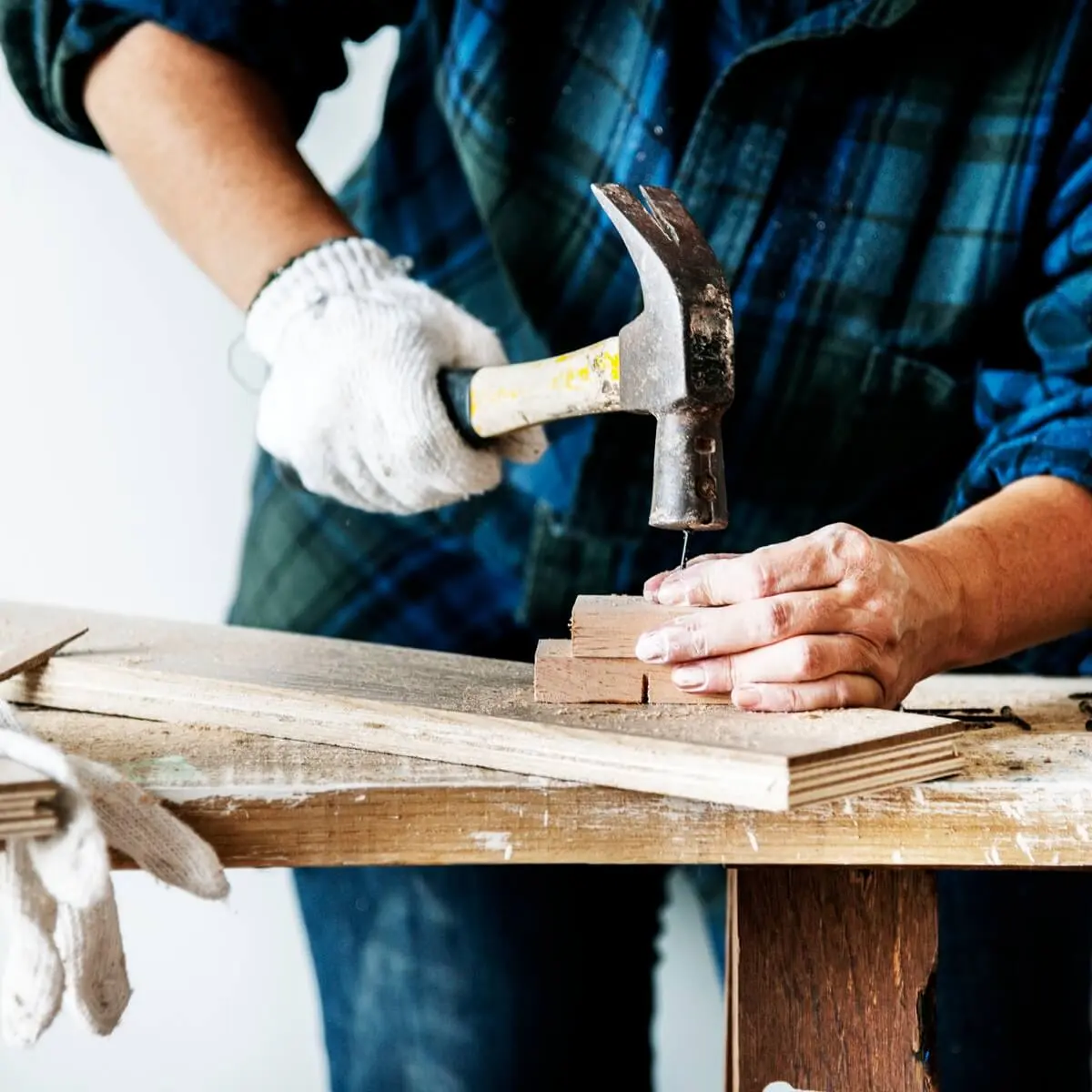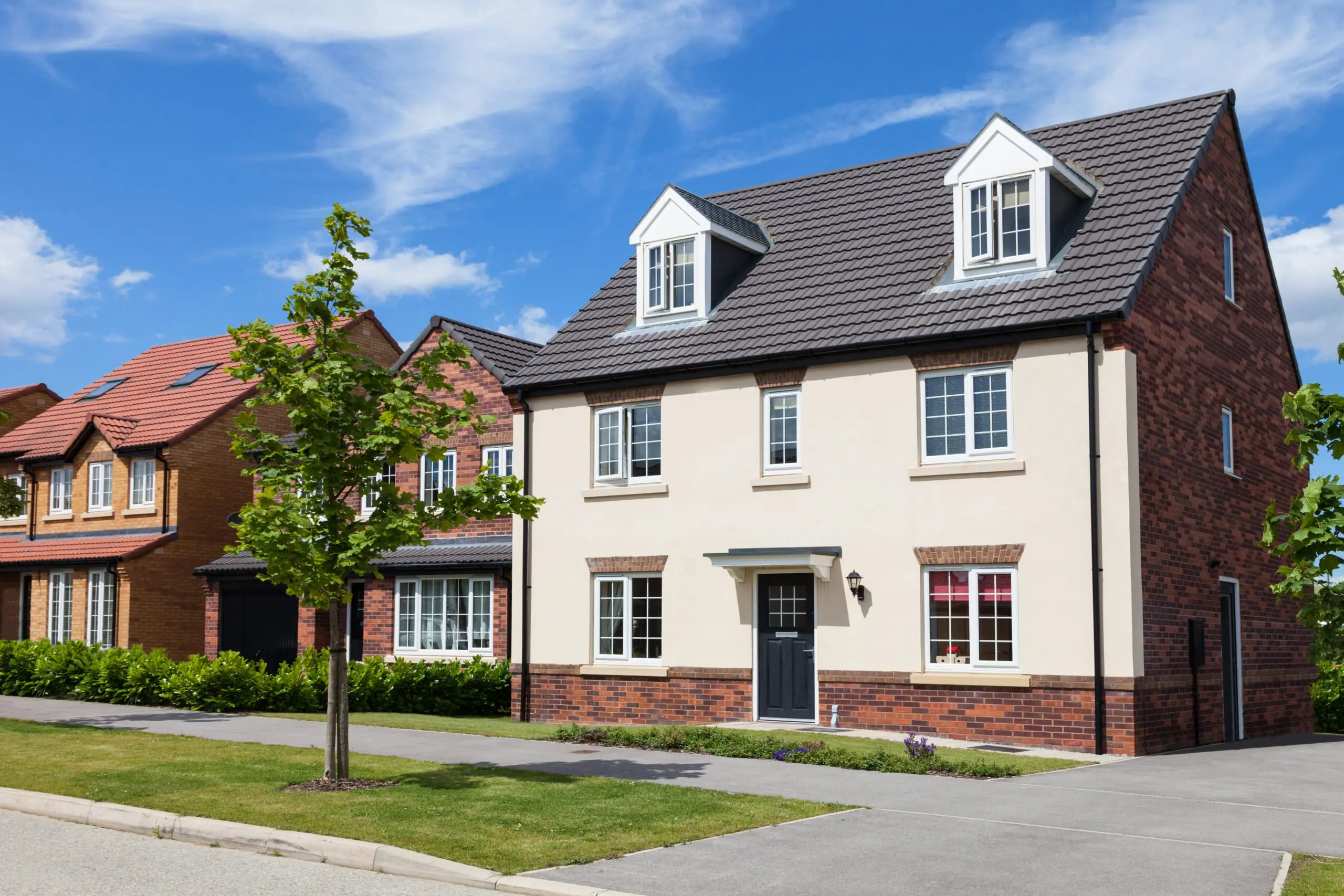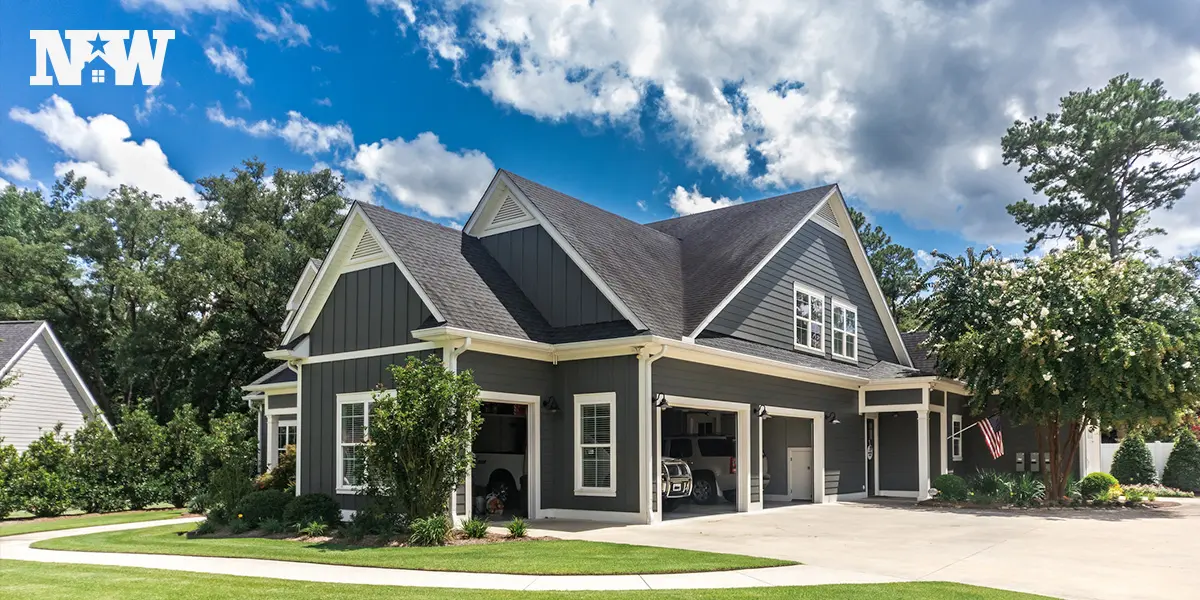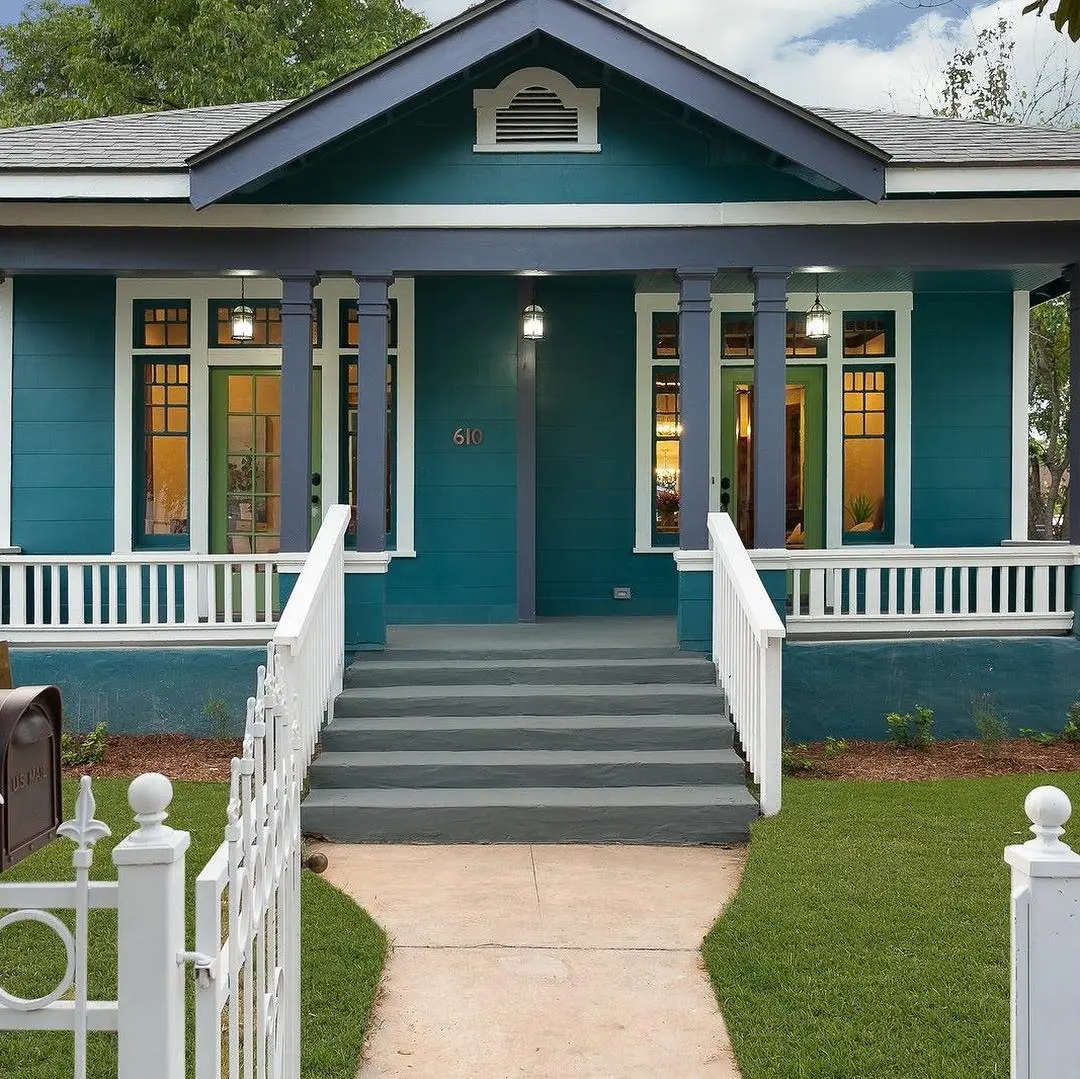We often get questions from newer real estate investors about ways to flip a house with no money down. Conventional loans and mortgage lenders typically demand that you have at least some down payment in order to qualify. Unfortunately, this isn’t always possible, especially if your money is already invested in another property. And if there is a great opportunity available right now, we understand the need to strike while the iron is hot.
Conventional loans aren’t always available when you want to buy a house that needs repairs. This is why a lot of people who flip houses use creative ways to get money and other strategies to help their real estate business plan.
How to Flip a House with No Money Down: Options That Work (Sorta)
Unfortunately, there aren’t any easy ways to flip a house without paying something. That said, it is possible to get into real estate flipping without putting tens of thousands of dollars down on a property.
Even if you don’t have enough cash on hand for a down payment and have a poor credit history, we’ve detailed the best ways to get money for fix and flip properties. We’ve gathered our real estate experts’ top creative financing options for funding your flip.
The following options aren’t going to require a sizable down payment or even good credit, as long as you have at least a thousand or two dollars to cover upfront costs (not counting the money you’ll need to cover repair costs), you can get started.
Wholesale Real Estate
Selling your rights to a property to another buyer for a profit is known as real estate wholesaling, and it’s a lower-risk real estate approach. This is a great way to get into the real estate market without having to pay a lot of money up front.
In essence, you find a property (typically in need of repair), put it under contract, and then “assign” the contract (not the house) to a buyer who will close on it and take care of the repairs. Instead of remodeling and listing houses yourself, this strategy focuses on being smart enough to spot a good wholesale deal and clever enough to negotiate contracts.
You can make money as a wholesaler by collecting an assignment fee for finding and contracting a transaction. This means you can make decent money without getting your hands dirty. The assignment fee is the difference between what you paid for the property when you contracted it from the property owners and what you were paid when you sold it to the investor.
What about the Earnest Money Deposit (EMD)?
Putting an earnest money deposit on a house isn’t necessarily a requirement; it’s more of a custom. It shows the seller how committed you are to buying the property. The EMD is usually1% to 3% of the property’s purchase price, however, wholesalers can choose to reduce the amount down to a mere $500 or less, if the local housing market is particularly slow and the competition is slim.
You could also work it into the contract that the potential buyer will have x-amount of days to submit an EMD. If you’re unsure about how to proceed, consider contacting a real estate attorney or an experienced real estate wholesaler for advice.
Live-In Flips
If you are hoping to get into house flipping on the side while simultaneously finding a place to live, a live-in flip might be the way to go. In addition to increasing the property’s value, this tactic has a relatively low financial risk. It’s an inexpensive way to get your hands dirty and flip houses, and you can go at your own speed.
Live-in flips can be a “no-money down” option if you qualify for either a USDA loan or a VA loan. These loans can be used to purchase property, as long as it’s going to be your primary residence and you intend on living in the property while you’re working it. This isn’t an option for those who are hoping for a quick turnaround because these loans typically require you tolive on the property for at least 14 months before you’re able to sell.
Minimum Requirements for USDA Loans and VA Loans | ||
USDA Loans | VA Loans | |
Credit Score | 620 | No minimum score |
Down Payment | $0 | $0 |
DTI Ratio | 43% or less | 41% or less |
Income Requirements |
|
|
Standard Loan Limits (These follow Fannie Mae/Freddie Mac limits) |
|
|
Crowdfunding
If you have bad credit and don’t think you’ll be approved for a conventional loan, you can get the money you need to flip a house through crowdfunding. By joining platforms like Fundrise or Groundfloor, you can get money from many investors who’ll agree to put a certain amount into your idea.
This is a great way to get money if you don’t have much but have a solid plan and have a suitable property with potential to present to the investors. It is important to keep in mind that you will be required to submit an application to the platform, obtain approval for each project, and maintain communication with your collaborators. You will need to have a strong track record because these platforms have a limited risk tolerance.
Just like when you’re trying to secure a private lender (more about that later), you’ll need to establish a fundraising target and win over investors who have faith in your real estate project and yourself. After you’ve raised enough money, you can repay the loan through the crowdfunding platform, and the platform will then pay out to its investors. In many cases, you will not get any money for your flip if the funding target is not satisfied.
Note: Each crowdfunding platform will have their own minimum investment requirements, terms, and conditions, so make sure you compare platforms and fully understand what’s on the line before signing up! Some of the top crowdfunding sites that require a low minimum investment include:
- Concreit: $1
- Fundrise: $10 minimum investment
- Groundfloor: $10 per loan, $1,000 minimum opening transfer
How to Flip a House with No Money Down: Special Mentions
The following options are a little different than the aforementioned ones in that, while they may require some kind of money being exchanged, you can flip a house without being saddled with payments equal to a second mortgage or rent payments.
Hard Money Loans
People who want to flip houses but only need a short-term loan to finish the job can get a hard money loan. Experienced house flippers and investors like these shorter loan terms because they know they can pay them back faster, even though the interest rate is usually higher.
People who want to buy and fix up a run-down house quickly can use hard money loans instead of traditional bank loans. And because collateral is used instead of credit scores for quick approvals, these loans are more accessible.
You can get a hard money loan quickly and easily, but the interest rates are high, so you should only use them when you know you’ll be able to make a quick sale.
Minimum Requirements for a Hard Money Loan | |||
Interest Rate | Processing Time | Minimum Down Payment | Loan Terms |
10% -15% | 1–2 Weeks | 70% LTV x ARV | 12- to 36-months |
Private Money Lenders and Private Investors
Even if you have bad credit or no money down, financing through private money lenders or private investors is another viable option; you just need to know where to look. Most commonly, you can do a quick Google search for private money lenders near me, but you can also find potential private money lenders by:
- Attend real estate networking events and chat with real estate agents, investors, and social media.
- Tell your inner circle of your plans; a friend of a friend could be the private lender you’re looking for!
- Foreclosure auctions because the bidders are cash buyers and willing to buy a house, sight unseen.
Similar to private investors, private money lenders focus on organized short-term loans. Private investors, on the other hand, are open to a wider range of investment options, including loans, equity holdings, and joint ventures.
For people who want to flip houses but don’t have their own money but have experience in other areas such as general contracting, project management, or home rehab, private loans are a great option. The reason being, private lenders typically expect you to increase the value of the potential property to match their investment. Partnerships that are most successful achieve a balance between capabilities and needs.
As your network grows, it becomes much easier to meet and collaborate with private real estate investors. You should bear in mind that just because you can find a private investor to help you flip houses doesn’t mean you won’t lose some control over the project. So be prepared.
Hard Money Loans vs Private Money Loans | ||
Hard Money Loans | Private Money Loans | |
Credit Requirements |
|
|
Repayment |
|
|
Collateral |
|
|
Flexibility |
|
|
Loan Terms |
|
|
Property Type |
|
|
Seller (Owner) Financing
Do you know anyone who has inherited a property but has no idea what to do with it? If so, this kind of situation would be a great way to get seller financing instead of going through a standard lender.
This is when the seller of the property assumes the role of the lender. Rather than making payments to a bank, you make payments directly to the seller according to the terms both parties have agreed upon.
This is an option for flipping a house with no money down because sometimes the seller just needs (or wants) a monthly cashflow. So with this in mind, it may be possible to negotiate with the seller to accept little to no money down, and in return you’ll agree to other terms like paying a higher overall price or other concessions.
Just make sure that you have a real estate attorney draw up a contract to make sure both parties are protected in case things don’t go as planned.
Seller financing can be structured four different ways:
- Loan or Promissory Note: This type of arrangement is similar to a normal mortgage. The buyer signs a document stating the lender would hold the property as collateral until loan is paid in full. With this approach, the buyer receives the title, and the mortgage is registered with the local authorities.
- Deed of Trust: This is comparable to the promissory note. A deed of trust arrangement allows a third party to hold the property’s title. Once the loan is paid off, the buyer will get the title without any problems.
- Contract for Deed: Unlike the previous two models, the seller holds the deed and title until full payment is made. After all the conditions of the deal have been met, the new owner will get the title and deed.
- Lease-Purchase Agreement: A lease-purchase agreement, sometimes called a rent-to-own agreement, is when the buyer agrees to rent the property for a certain amount of time before finalizing the terms to buy it. If the buyer buys the property after the lease period, all rent paid will be used toward the purchase price.
Cash-Out Refinance
Do you own another property and it has substantial equity? If that’s the case, you might want to look into cash-out refinances, where you access funds to finance a house flip using the equity in your home as collateral.
To put it simply, a cash-out refinance involves taking out a new mortgage in lieu of your current one and paying off your previous balance with an equity loan. You can put the difference toward the purchase of a flip house or toward the cost of repairs. This method is ideal for buying flips that require minor repairs or renovations.
It is important to keep in mind that you will still be responsible for paying the closing costs. Also, the interest rates on equity loans are usually higher than those on standard financing. You may also be required to obtain mortgage insurance if you refinance for more than 80% of the property’s value.
Minimum Requirements for a Cash-out Refinance | |||
Credit Score | Cash Reserves | LTV Ratio | Waiting Period |
680 and up | At least 12 months’ worth of mortgage payments | 25% or more | Must wait six months to refinance after the property was purchased |
Note: Cash-out refinancing may not be the best option if you currently have a low interest rate and favorable loan terms. When you refinance, you’re basically agreeing to a new mortgage and new terms–which also includes current interest rates, which are hovering between 6.4 to 7.1% for refinancing.
Credit: Bankrate
How to Flip a House with No Money FAQ
Here are some common questions about house flipping for beginners:
1. How Much Does It Cost to Flip a House?
The costs of flipping a house will vary a lot based on things like the purchase price, the repairs that need to be done, and where the property is located. Repairs alone can eat up 20% to 33% of a property’s ARV.
For instance, if you have your eye on a home with a $220,000 buying price and a $450,000 ARV, be prepared to spend between $90,000 and $150,000 in renovation costs. Remember that this does not include other necessary expenses such as purchasing the property, carrying costs such as property taxes and insurance, or selling costs such as agency fees and closing fees.
2. Can You Flip a House with Bad Credit?
The answer is yes, even with bad credit, you can still flip houses. Loans from conventional lenders may be out of the question if you have a history of bad credit or a foreclosure on your credit report, but you still have options for getting the money you need. Direct lenders that offer either hard money loans or use their own money, often look at the property’s potential rather than your credit history.
They use a method that is known as asset-based lending, which means that they may provide funding for your project if the property appears to be a solid investment and you can demonstrate that you are reliable. All you have to do is persuade these lenders that the great opportunity you’ve presented them enables them to get their money back plus interest.
3. Is House Flipping the Right Investment Strategy for You?
If you want to start a house flipping venture, you need more than just money. You also need to have the right attitude and set of skills. Do you perform well under pressure? Are you adept at budget management and project oversight? Can you spot good real estate deals that could turn a reasonable profit?
Remember, if you want to make money flipping houses, you need to be able to see potential and weather the ups and downs of real estate investing.
Note: If you think flipping houses isn’t the right real estate investment strategy for you right now, there are other avenues you can explore. You can learn more about the different ways you can invest in real estate by reading our in-depth guide, A Complete Guide on the Strategies Pros Use to Invest in Real Estate.
4. What Is the 70% Rule When You’re Flipping House?
There is a basic guideline that can be used to determine how much to pay for a fixer-upper house, and that is the 70% rule. Your goal should be to pay no more than 70 percent of the home’s appraised value, minus the amount that will be spent on repairs. The formula looks like this:
Formula: (ARV x 70%) – Rehab Cost = Purchase Price
By adhering to this rule, you will have a cushion for unforeseen expenses and profit margins. It is crucial to know the ARV before making a purchase, as it could be necessary to negotiate the sale price.
Note: You can learn more about ARV, it’s importance, and how to maximize profits in our article, Understanding ARV in Real Estate.
Ready to Find Houses to Flip?
Ready to look for a house to invest in? Awesome!
Just know that finding good investment properties isn’t always easy. You need to know your way around the real estate industry, have a firm grasp on potential worth, and do your homework on the local markets. It can be overwhelming, even for both experienced investors and successful house flippers alike!
Don’t worry because the New Western team is here to help you, so don’t have to do it by yourself. For more than a decade, we have been doing the work of connecting investors with properties, either to fix and flip or turn into rental properties. Discover rare, off-market rehab properties that are ideal for your next flip with the help of our qualified real estate brokers. Call us today so you can put what you’ve learned about how to flip a house with no money to use!







